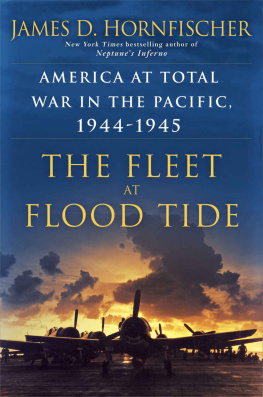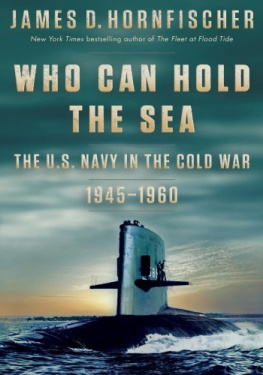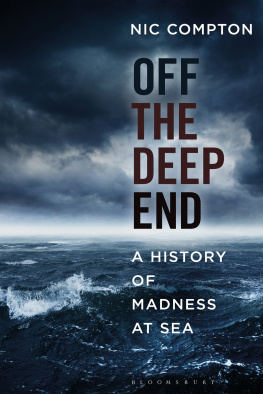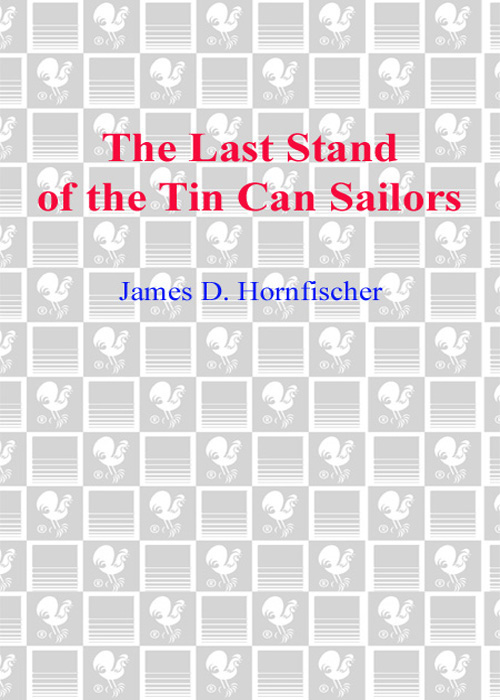This will be a fight against overwhelming odds from which survival cannot be expected. We will do what damage we can.
With these words, Lt. Cdr. Robert W. Copeland addressed the crew of the destroyer escort USS Samuel B. Roberts on the morning of October 25, 1944, off the Philippine island of Samar. On the horizon loomed the mightiest ships of the Japanese Navy, a massive fleet that represented the last hope of a staggering empire. All that stood between it and Douglas MacArthurs vulnerable invasion force were the Roberts and the other small ships of a tiny American flotilla poised to charge into history.
THE LAST STAND OF THE TIN CAN SAILORS
It was an upset victory won by overmatched American warships fighting a battle they were never supposed to fight. In a two-and-a-half-hour running cataclysm in the Philippine Sea, the Americans performed the impossible, turning back the Japanese Navy in its last desperate gamble and changing the course of World War II in the Pacific. Writing from the point of view of the men who waged this steel-shattering battle, following them from training camps to the midst of an engagement that the eminent historian Samuel Eliot Morison called the most remarkable of the Pacific war, James D. Hornfischer brings to life the valor of individual sailors, officers, and airmen in a riveting account of war at sea as it has seldom been presented before.
Spellbinding. Hornfischer has captured the essence of naval warfare. He relays this story of heroism amidst graphic descriptions of tin can sailors fighting their ships until their shipsare goneand then they fight sharks, thirst, and delirium. This book should be read by all Americansand never forgotten.
Rear Adm. Charles D. Grojean, USN (Ret.), Executive Director, The Admiral Nimitz Foundation
WINNER OF THE SAMUEL ELIOT MORISON AWARD FOR NAVAL LITERATURE
A MAIN SELECTION OF
THE BOOK-OF-THE-MONTH CLUB AND
THE MILITARY BOOK CLUB
A FEATURED ALTERNATE SELECTION OF THE HISTORY BOOK CLUB
More Praise for James D. Hornfischer and
THE LAST STAND OF THE TIN CAN SAILORS
A critically acclaimed, blow-by-blow look at a small American force counterattacking into the teeth of hopeless odds. Miami Herald
An instant and enduring classic of naval warfare and World War II literature. Flint Journal
Samar is a grand American epic and in Hornfischer it has finally found a narrator to match its scale. This is an exemplary combination of old style naval history narrative deeply enriched and elevated by a carefully woven collage of new style individual testimonies that hammer home the human experience. A vivid and brutal portrait of naval surface warfare. No existing work can touchLast Stand in conveying the realities of gunfire and torpedo warfare on vessels powered by superheated steam.
Richard B. Frank, author of Guadalcanal
What a treat it was to read this work. Hornfischer paints a portrait so remarkable he should at least be made an honorary tin can sailor. [His] skillful description makes the old salt reader, as well as the landlubber, feel right there on board those little tin cans, alongside the sailors whose lives become real. The naval historian and amateur alike can learnfrom this fascinating book.
Vice Adm. Ron Eytchison, USN (Ret.), Chattanooga Times Free Press
A brilliant, fast-moving book worthy of the sailors who fought the first major work to concentrate solely on the Battle off Samar does admirably for the sailors what Stephen Ambrose has done for infantry soldiers. Will enthrall any reader with even a tepid interest in World War II naval history.
San Antonio Express-News
An astonishing story that leaves the reader shaking, breathless, and forever thankful that such a generation of seamen existed to defend this country. This is the most gripping work of naval history in years.
H. W Brands, Distinguished Professor of History, The University of Texas; author of The First American
Hornfischer is a powerful stylist whose explanations are clear as well as memorable. He never loses control. A dire survival-at-sea saga.
Denver Post
Epic, elegiac, charged as a torpedo foaming through the water leads us through violence, grand strategy, spectacle, and shocking loss. A wreath, offered lovingly, to some of the bravest young American seamen ever to sacrifice themselves in battle.
Ron Powers, coauthor, Flags of Our Fathers
Surprisingly the first book to detail the Navys astonishing achievement in the World War II Battle off Samar. A valuable tribute and also a reverent eulogy.
Sea Power magazine
An immensely gripping account of the supreme courage and self-sacrifice displayed by the outgunned sailors and airmen. With captivating prose and innovative battle maps, Hornfischer deftly creates a clear picture of what has been characterized by some historians as the most complex naval battle in history. Hornfischers work will be welcomed by both generalreaders and naval enthusiasts. Highly recommended.
Library Journal
One of the most outstanding examples of courage in U.S. naval history a gripping and detailed account more than just a battle narrative. Hornfischer provides fascinating background on what the U.S. ships, crews, and commanders were capable of in battle. Classic naval history.
Dallas Morning News
Reads like a particularly good novel this popular history magnificently brings to life men and a time that may seem almost as remote as Trafalgar to many in the early twenty-first century.
Booklist (starred review)
Hornfischer tells colorful stories of heroism and companionship. The book is well-told and enjoyable [with] excellent and pertinent notes, documentation and bibliography. Associated Press
Stirring, inspirational No account of the running gun battle off Samar has been told intimately from the personal perspectiveuntil now. Hornfischer makes a stellar debut that ranks with John Lundstroms The First Team and Rich Franks Guadalcanal. We eagerly await his next book.
Barrett Tillman, The Hook
Only once in a great while does a book come along that manages to combine authentic historical detail with the fast pace of the thriller. This isan important book and one that everyone interested in navalhistory should read and that every destroyer veteran should have inhis personal library. If you read only one destroyer book about the war in the Pacific, The Last Stand of the Tin Can Sailors should be that book.
The Tin Can Sailor/The National Association of Destroyer Veterans
An absolutely fascinating story and a valuable and unique addition to the literature of the Pacific naval war.
Rear Adm. Donald Mac Showers, USN (Ret.)
James Hornfischer drops you right into the middle of this ragingbattle, with five-inch guns blazing, torpedoes detonating and Navy fliers dive-bombing. The overall story of the battle is one of American guts, glory and heroic sacrifice.












